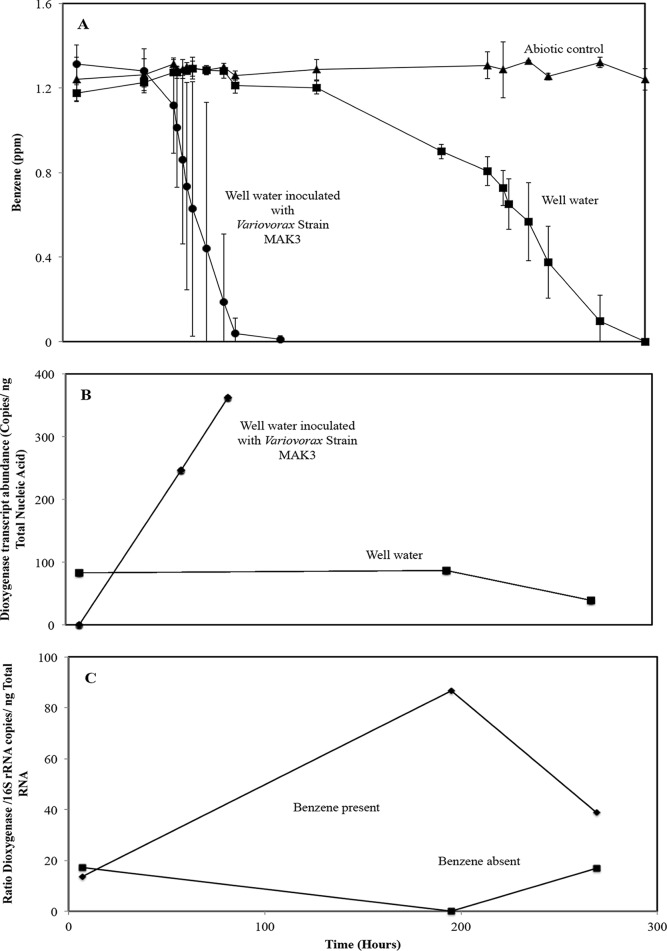FIG 4.
Experiments assessing the role of Variovorax strain MAK3 and its ring-hydroxylating dioxygenase (RHD) gene in benzene degradation in the naturally occurring well water microbial community. (A) Benzene degradation in freshly gathered contaminated well water sample (well 36) with and without added Variovorax strain MAK3 cells (initial cell density ∼105 CFU/ml). Error bars represent the standard deviations from averages of triplicate microcosms. (B) Dioxygenase transcript abundances (β subunit of ring-hydroxylating dioxygenase) in well 36 water community with and without added Variovorax strain MAK3 cells (initial cell density ∼105 CFU/ml). Data points represent single qPCR measurements. (C) Dioxygenase mRNA (β-subunit of ring-hydroxylating dioxygenase normalized to copies of 16S rRNA transcripts) in the well 36 microbial community induced by benzene addition. Variovorax strain MAK3 cells were not added to these treatments. Data points represent the ratios of single qPCR measurements.

